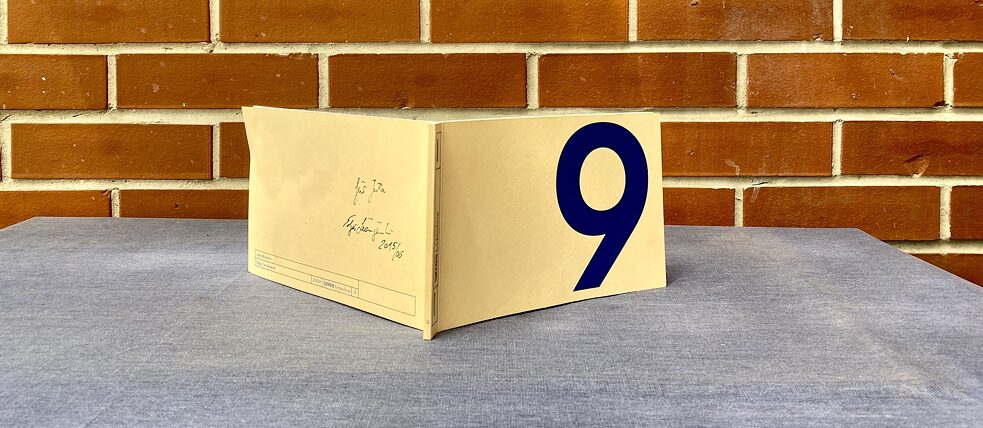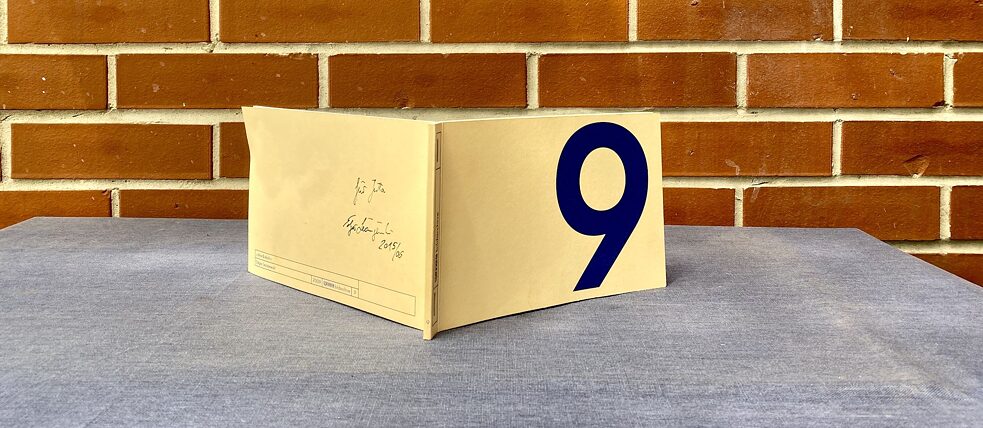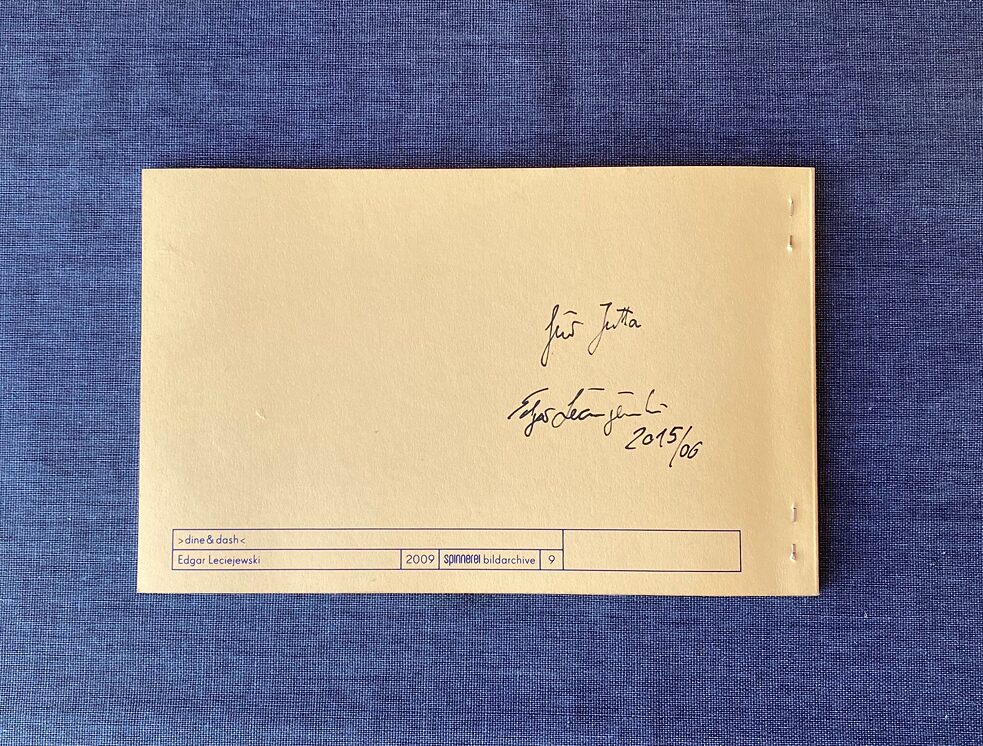Edgar Leciejewski’s bildarchive
The Photo as Series and Archive

You don’t have to go to a gallery to experience art and explore how it inspires us. In this series, meet Leipzig photographer Edgar Leciejewski, hear about the rise and fall of the Polaroid, and make your own flip book.
By Jutta Brendemuhl
Whether Marie Kondo or Netflix fatigue has driven you to your bookshelves, in times of crisis (or cleaning) we’re more mindful of the resources around us—long-forgotten records, old photo albums, stashed away guitars. I was browsing through my shelves while creating an Instagram spine poetry series when I came across a tiny booklet I hadn’t held for a while, the only marker on its spine a mysterious number nine. Not a Harry Potter tome missing the iconic “3/4,” this yellow-beige softcover comes in at only ten pages. Laid out at nine by five inches, it is a miraculous six-in-one artwork: photo series, exhibition catalogue, art book, image archive—as the title Bildarchive suggests—postcard collection, and even a flipbook (Daumenkino in German, meaning “thumb cinema”), adding another medium to the experience.
This is Leipzig photographer Edgar Leciejewski’s work from his dine & dash series. I met Leciejewski in 2015 after he had spent half a year on Fogo Island, a remote rock out in the Canadian Atlantic and home to a prestigious international artist residency supported by the local community. He came down to Toronto to delve into the urban periphery of Canada’s largest metropolis during his North York residency with support from the Goethe-Institut. When Edgar left, three exhibitions and several workshops, lectures, and participatory city photo walks later, he gave me this book of 20 Polaroids.
Looking at what art can be and do and how it shows up all around us, let’s peel away this book’s layers, starting with the central idea of the series and the archive. Fine art photography—as opposed to news photography—seldom exists as singles. It rarely lives in that one famous shot as fashion or press photography does—Marilyn Monroe’s blown-up skirt, the Spanish partisan being killed, the child in a rain of napalm (although these photos, too, are often part of a series we don’t remember or will never see). A series—the composition of an artist’s works that relate to each other—aids in storytelling. They afford the artist to investigate multiple perspectives, often literally, on a theme or object, to develop and show a signature style, explore an evolving color scheme or linked style, perhaps presented in a line, a wave, or a grid arrangement. German conceptual artists Bernd and Hilla Becher of the Düsseldorf School are a great example, creating rows upon rows of detailed topographies and typologies out of thousands of images of industrial architectures.

Next time, we’ll start chatting with Edgar and solve the mystery of the number nine. Until then, you can begin your own art book/book art exploration by grabbing a book from your shelf or reading up on archives.
